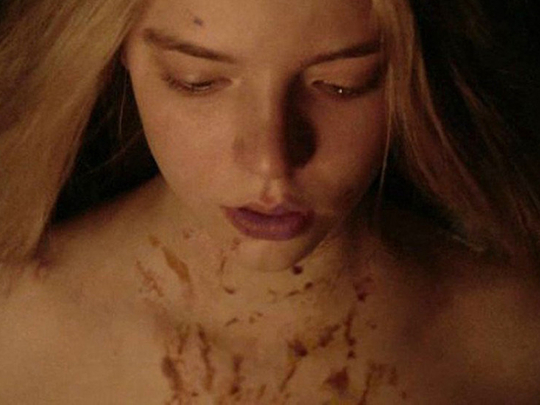
A grim, uneasy sense of doom pervades The Witch, writer-director Robert Eggers’ audacious and assured feature debut.
An avatar of a subgenre that might be called Colonial gothic, this chillingly atmospheric story of Calvinist zealotry and creeping hysteria joins the ranks of such landmark horror films as The Omen, Rosemary’s Baby and The Exorcist. That The Witch comports itself less like an imitator of those classics than their progenitor is a tribute to a filmmaker who, despite his newcomer status, seems to have arrived in the full throes of maturity, in full control of his prodigious powers.
The Witch begins in 1630, as an English settler named William (Ralph Ineson) is being banished from his New England plantation of Puritan colonists, forcing him to move with his wife, Katherine (Kate Dickie), and their four children to a hardscrabble farm on the outskirts of a forbidding forest.
When their oldest daughter, Thomasin (Anya Taylor-Joy), takes her infant brother for a walk one day, she ventures too close to the woods, which are strangely charged with palpable but invisible forces. A series of bizarre events begins to unfold, each more terrifying than the last, calling into question whether the farm’s blighted crops, strangely behaving animals and apparent descent into madness are a function of William’s and Katherine’s religious paranoia or the handiwork of Satan.
Until now, Eggers has worked as a production designer and art director for independent films and TV shows, his visual depth and fluency giving The Witch a look that is both austere and improbably rich. Aided by Jarin Blaschke’s cinematography — which recalls Vermeer’s most haunting portraits in its candlelit glow and velvety shadows — and a slashing, dissonant score by Mark Korven, Eggers plunges viewers into a world of icy severity and harsh deprivation, putting the lie to the cosy American myth of resourceful, poor-but-happy settlers. (Viewers could profitably debate the far more novel and sophisticated critique of Manifest Destiny in The Witch, as compared with the overwrought theatrics of The Revenant.)
Eggers reportedly based his script on actual diaries and accounts from a time that predated the Salem witch trials by several decades, giving The Witch the mannered cadences and rhythms of something written on parchment rather than celluloid (or, in this case, the data capture chip of an Arri Alexa digital camera). It isn’t until the film’s graphic, gory denouement that Eggers’s command begins to slip, and The Witch enters into conventional body-horror territory, its increasingly graphic imagery and keening pitch supplanting the more effective restraint and misdirection that have gone before.
Among his many strengths, Eggers possesses an acute eye for casting: The physically imposing Ineson, blessed with a sonorous, basso profundo of a speaking voice, handles William’s filigreed speech patterns beautifully, and Dickie is equally adept at evoking the self-sacrifice and determination of a woman who’s both a helpmeet and pioneer in her own right.
But if The Witch belongs to anyone it’s Taylor-Joy, a dead ringer for Michelle Williams who makes a stunning debut as a young woman caught between the depredations of both the natural and supernatural worlds. Along with Harvey Scrimshaw, who plays Thomasin’s attentive brother Caleb, Taylor-Joy elevates The Witch from the impressive to the revelatory, delivering a performance that is delicate, steely, vulnerable and potent all at once.
For fans of horror at its most sinister, The Witch is not to be missed. It casts a spell that lingers long after its most disquieting mists have cleared.
The Witch is out in UAE cinemas on March 17.









